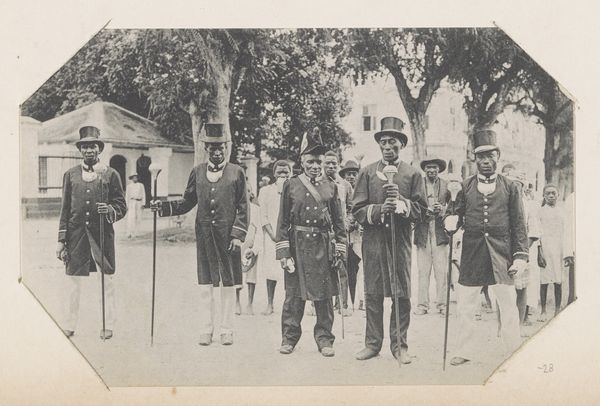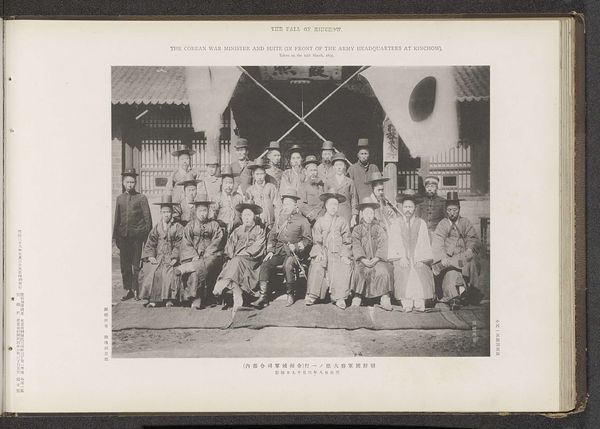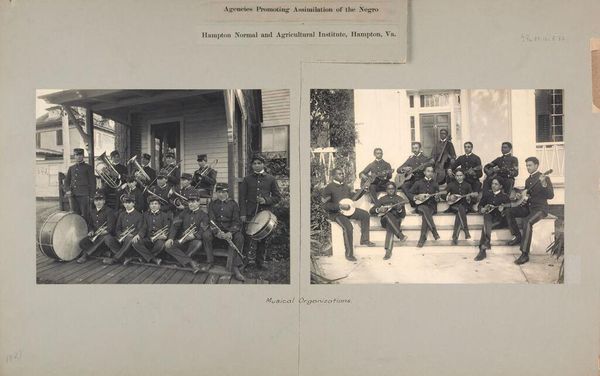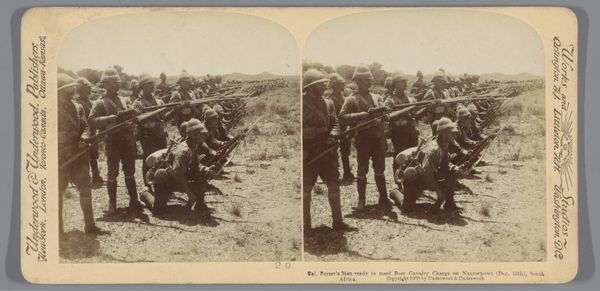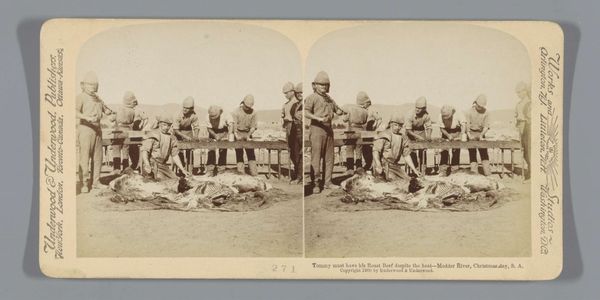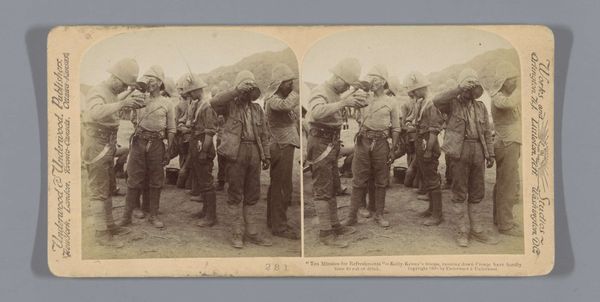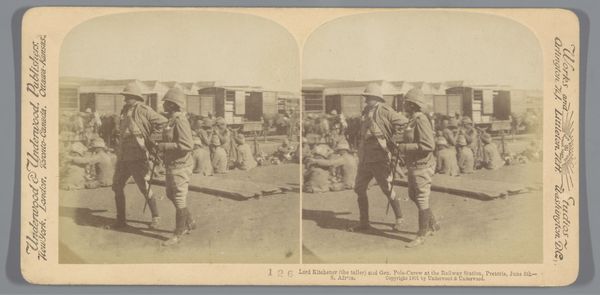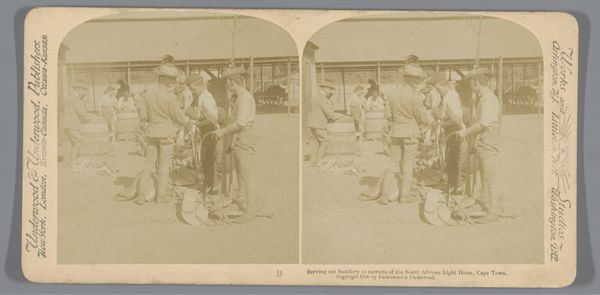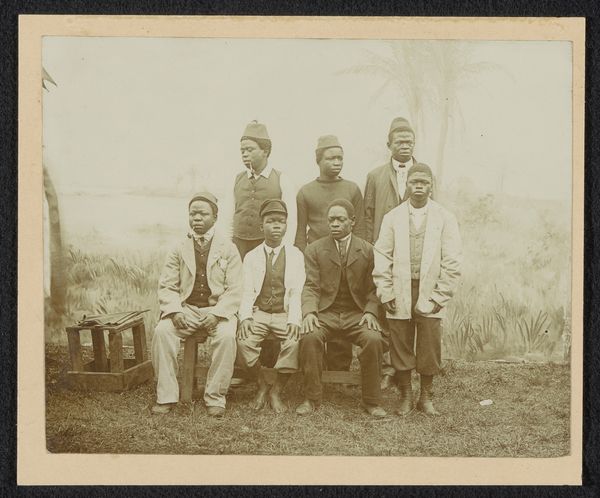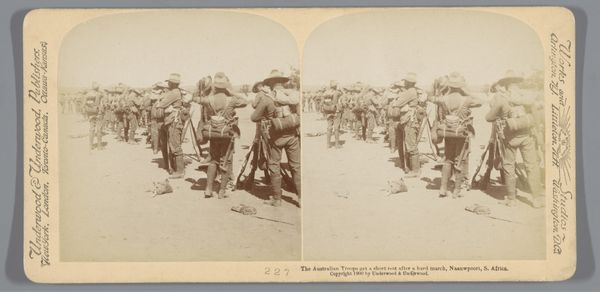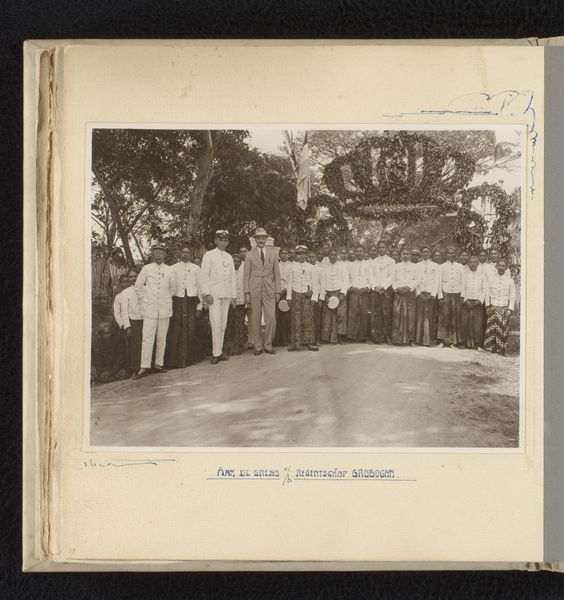
Generaal Thomas Kelly-Kenny en zijn staff voor de slag van Paardeberg, Zuid-Afrika 1901
0:00
0:00
photography, gelatin-silver-print
#
portrait
#
african-art
#
photography
#
group-portraits
#
gelatin-silver-print
#
history-painting
#
realism
Dimensions: height 87 mm, width 177 mm
Copyright: Rijks Museum: Open Domain
Curator: What strikes me immediately is the imposing air of self-importance conveyed by these figures, arranged in a strict hierarchy before what seems like a hastily erected verandah. It feels calculated, deliberately staged. Editor: That's an apt assessment. We are looking at a gelatin silver print dating to 1901. Its title is “Generaal Thomas Kelly-Kenny en zijn staff voor de slag van Paardeberg, Zuid-Afrika," or "General Thomas Kelly-Kenny and his staff before the battle of Paardeberg, South Africa.” It depicts the British General and his officers. Curator: There's a rigidity here, almost performative, that seems intended to project invincibility and unquestioned authority. The symbols are hard to miss: the uniforms, weapons, pith helmets. I feel a calculated narrative is unfolding through this portrait. Editor: Absolutely. And consider that Paardeberg was a pivotal battle in the Second Boer War. The image serves as visual propaganda, designed to bolster support for the British war effort. Their stoicism plays into an established ideal of the British officer, ready to suppress any perceived instability that their colonizing efforts threatened. Curator: It's precisely this cultural encoding that I find so fascinating! The visual language echoes across imperial eras; this portrait is almost indistinguishable from depictions of Roman legions. It perpetuates the mythology of martial might. There is cultural memory in the visual repetition, the visual history. Editor: Indeed. This image, and others like it, normalizes colonialism and its violent suppression of indigenous resistance. We should challenge the narrative of inevitable British victory, and reflect upon the legacy of colonialism in South Africa and the ongoing impact of systemic inequalities perpetuated in the aftermath. Curator: Thank you. Seeing this photograph through your eyes adds another important layer, one of interrogation and remembrance. It allows us to witness, but to simultaneously resist its propagandistic aims. Editor: The symbols displayed, like colonial expansion and suppression of the natives, demand a contemporary, ethical engagement and constant vigilance in revealing subjugated knowledge that the photo aims to efface.
Comments
No comments
Be the first to comment and join the conversation on the ultimate creative platform.
